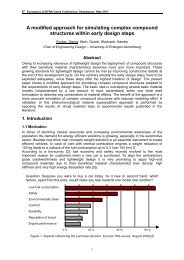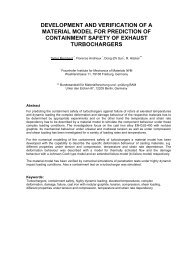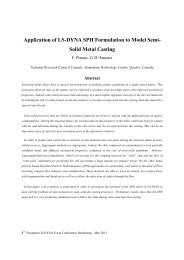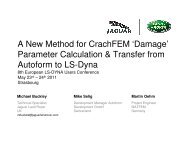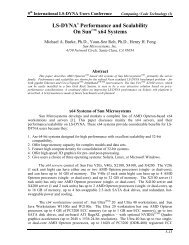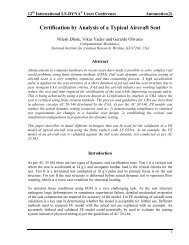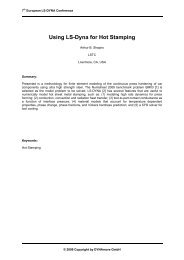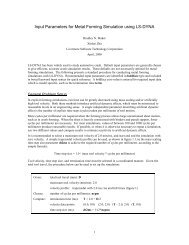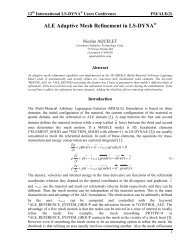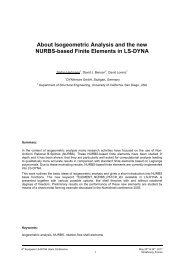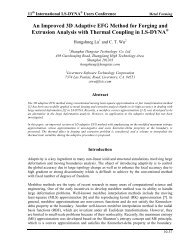Development of a thorax finite element model for ... - DYNAlook
Development of a thorax finite element model for ... - DYNAlook
Development of a thorax finite element model for ... - DYNAlook
You also want an ePaper? Increase the reach of your titles
YUMPU automatically turns print PDFs into web optimized ePapers that Google loves.
possible in our case. Two lung <strong>model</strong>s were then compared especially a comparison between<br />
two sets <strong>of</strong> parameters <strong>of</strong> a lung <strong>model</strong> (Table 2) is done in order to better understand the<br />
biomechanical response <strong>of</strong> the lung. This may give some indication <strong>of</strong> which lung <strong>model</strong> to<br />
use. Results show that <strong>for</strong> the velocity <strong>of</strong> 20 m/s, there is a good agreement regarding <strong>for</strong>cetime<br />
history and deflection-time history (Fig. 7-8).<br />
Figure 6. Dynamic <strong>for</strong>ce: comparison <strong>of</strong> the two <strong>model</strong>s<br />
Figure 7. Dynamic <strong>thorax</strong> deflection: comparison <strong>of</strong> the two <strong>model</strong>s<br />
But at 40 m/s, results are quite similar between the two <strong>model</strong>s but the calculation stops at<br />
1.26 ms <strong>for</strong> the ‘LUNG_01’ (Fig. 8) with an error message ‘complex sound speed in solid<br />
<strong>element</strong> in the lung’. Some <strong>element</strong>s were highly distorted (Fig. 9). We are still investigating<br />
why this <strong>model</strong> fails.<br />
8th European LS-DYNA Users Conference, Strasbourg - May 2011



